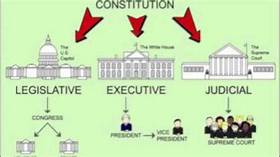Which Branch Makes Laws About Leashing Your Pet
Leashing laws for pets, also known as leash laws, are regulations that require pet owners to keep their animals on a leash when in public areas. These laws are typically enforced by local authorities, such as city or county animal control officers, and can vary from one jurisdiction to another. Understanding the branch of government responsible for making leash laws and the potential consequences for violating them is essential for pet owners to ensure compliance.

Local Government
In most cases, leash laws are enacted at the local level by city councils or county commissions. Local governments have the authority to regulate public spaces within their jurisdiction, including parks, sidewalks, and streets, and can impose leash requirements to promote public safety, protect wildlife, and maintain a clean and orderly community.
1. Municipal Ordinances: Leash laws are typically established through municipal ordinances, which are local laws passed by city councils or similar governing bodies. These ordinances may specify the areas where leashing is required, the length of the leash, and any exceptions or exemptions that may apply, such as for service animals.
2. Enforcement: Local animal control officers are responsible for enforcing leash laws. They may patrol public areas, respond to complaints, and issue citations or fines to pet owners who violate the leash requirements.
State Government
In some jurisdictions, state governments may also play a role in regulating leashing. While leash laws are primarily a matter of local ordinance, state laws may set minimum standards or impose certain restrictions on local governments' ability to enact leash laws.
1. State Statutes: Some states have statutes that address leashing and animal control. These statutes may provide a framework for local governments to adopt leash laws, setting forth general requirements and guidelines. State laws may also impose penalties for violating leash laws, such as fines or imprisonment.
2. State Animal Control Agencies: Some states have state animal control agencies responsible for enforcing animal welfare laws and regulations. These agencies may have the authority to investigate and enforce leash laws, particularly in cases where local animal control officers are unable or unwilling to do so.
Federal Government
The federal government generally does not have a direct role in regulating leash laws. However, federal laws may indirectly impact leashing requirements. For example, the Americans with Disabilities Act (ADA) prohibits discrimination against individuals with disabilities, including those who use service animals. As a result, local governments must make reasonable accommodations for service animals, which may include exemptions from leash laws.
Conclusion
The branch of government responsible for making leash laws varies depending on the jurisdiction. In most cases, leash laws are enacted at the local level by city councils or county commissions. However, state governments may also have a role in regulating leashing, setting minimum standards, or imposing penalties for violations. The federal government generally does not have a direct role in regulating leash laws, but federal laws, such as the ADA, may indirectly impact leashing requirements.
Declaration: All article resources on this website, unless otherwise specified or labeled, are collected from online resources. If the content on this website infringes on the legitimate rights and interests of the original author, you can contact this website to delete it.





